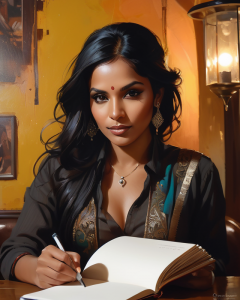
Every author, regardless of the genre they write in, has some kind of message in their writing. Whether that is good overcomes evil, soulmates exist, happily ever afters are possible, crime doesn’t pay, etc, etc. You get my drift. Now, these messages aren’t necessarily emblazoned on their covers or blurbs. In fact, sometimes, the messages are so deeply buried within the writing that a reader would be hard pressed to vocalise them if asked. But they are there, even in the fluffiest romcom, the bloodiest crime caper, the most nerve-tingling thriller. Search and you will find.
However, sometimes, there is a disconnect between the message sent and the message received. What an author may be trying to say is open to hundreds of interpretations and misinterpretations. It depends on the reader, their mood, their provenance, their cultural history, their upbringing, their exposure to the world and many such factors. That can make for a jarring experience, both for the reader, and also for the author when they read a scathing review of their work. “That wasn’t what I was saying!” An author might cry out in the privacy of their home.
Whose fault is the misunderstanding? The author’s or the reader’s?
Now, having been both, I can tell you that the answer is complex and nuanced. As an author who is trying to put a point across, I want to be subtle. I want to layer my message within the story, the dialogues, the actions of the protagonists and the consequences of those actions. Do I want to beat the reader over the head with my message repeatedly? No! That is the most basic and worst kind of didactic writing there is. Yet, within all of this lies the risk of being misunderstood.
Let’s take the last novel I wrote and released back in 2022: Intersections. Most of the reviews I received were wonderful. Haunting, complex, emotional and compelling were some adjectives used to describe the story. So far, so good. But any writer worth their salt knows that it’s the negative reviews that stick in one’s head. I know of many authors who refuse to read their reviews, content if their works have a high star rating. I, sadly, am not amongst those. I enjoy reading my reviews because I see it as a learning ground. Somewhere I can find out firsthand what my readers are thinking, what I did well and what I could do better.
This one review had me baffled. The reviewer said she found the book was very well written, that I, as the author, had tackled an intricate plot with four alternating viewpoints and kept her engaged throughout. She then went on to talk about the story and finally ended with saying that the reason she wasn’t giving the novel a full five stars, despite having enjoyed it, was because the book didn’t seem to have a point or a higher message. Therefore, she felt it would not endure.
Picture a knife to the heart. That is how gutted I was to read this review. You see, my point had escaped her completely. This novel about four young women from very different walks of life who become friends in childhood, only for their friendship to splinter in their teenage years, for them to go their separate ways and reunite in their forties, had a point and a higher message. I wanted to show how random life can be. How those we perceive to be more fortunate and more blessed than us are subject to the same vagaries of fate as anyone else. Being born into a higher social and economic strata does not ensure happiness nor is it a guarantee of success, while conversely, coming from the lower end of society is not a predictor of misery and failure. Life is messy and unpredictable. Our spheres of control are limited and the sooner we accept that, the quicker we will adapt to and thrive in changed circumstances.
Perhaps it was my fault that my message wasn’t clear enough. Maybe the novel, which begins with an accident, and ends with the reason the accident occurred and the consequences of that fateful evening, felt jarring to this reader because it was too arbitrary to come to terms with. Unfortunately, many a time, life is that way, too.
As I’m working on my next novel, this criticism keeps me wondering whether I’m doing enough to convey my point. This book deals with the circularity of life, of how what goes around comes right back around. Do I keep it understated as I would like to? Or will that be too obscure and unfathomable to a potential reader? I could choose to ignore this reviewer and write what I want to write. That would be at my peril. You see, every reader is precious to me, and their criticism is a part of my growth as a writer.
Therefore, it is incumbent upon me to work on my craft and deliver a reading experience that is consistent with my philosophy, my convictions, and my worldview. Hoping these will be understood and will align with those of the reader, too.
That, after all, is the point.


